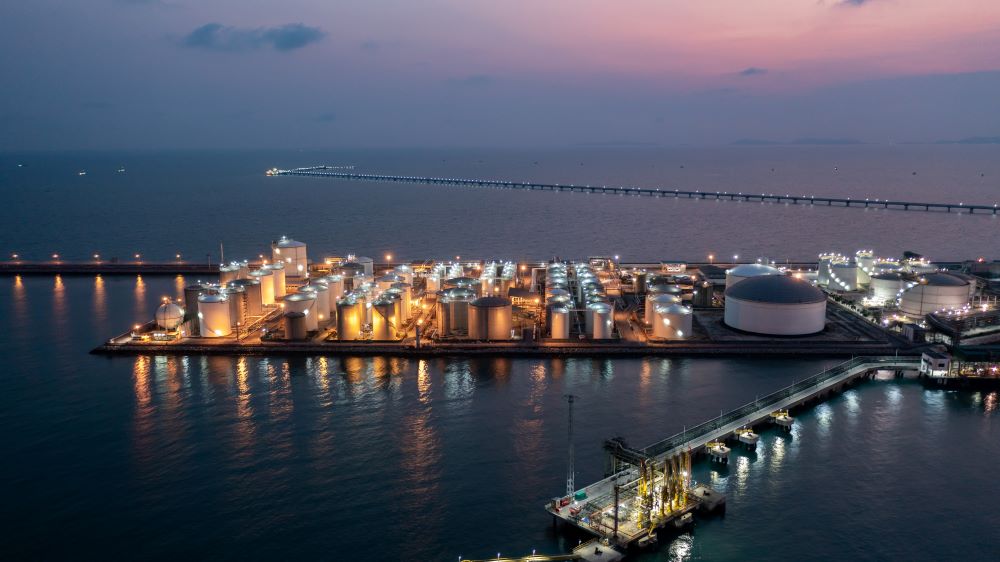Above ground tanks are becoming increasingly popular for storing liquids, hazardous materials, and other substances. However, there are some common misconceptions about these tanks that can lead to confusion and misunderstanding.
In this article, you’ll learn about the most common misconceptions about above ground tanks and why they are false. You’ll also discover what the advantages of using above ground tanks really are and whether or not they should be used in your specific situation.
Above ground tanks have many benefits, such as being easier to install and faster to deploy than traditional underground storage options. They can also be more affordable than their underground counterparts. With proper maintenance, they can even last for decades.
We invite you to read on as you explore the true facts about above-ground tanks and discover how they could revolutionize your liquid storage needs.
Above Ground Tanks Are Unsafe
Above ground tanks have long been associated with danger. This is understandable, as when not properly installed, any tank can be cause for concern. However, with the right safety measures in place, above ground tanks can be an effective and safe way to store and transport liquids.
When it comes to these tanks, there are a few common misconceptions that need to be addressed. Here are some of the most common myths and the facts behind them:
- Myth: Above ground tanks are combustible – While any tank can be combustible if exposed to extreme heat or ignition sources, above ground tanks are inherently non-combustible when built with the right materials. Fire-retardant materials such as fiberglass and special coatings can offer additional protection against corrosion and fire hazards.
- Myth: Above ground tanks are not strong enough – This is simply untrue. Above ground tanks are designed to meet or even exceed industry standards for strength and durability—especially when made from rigid materials like steel and fiberglass. Plus, with proper maintenance and inspections, their strength can last for many years.
Ultimately, above ground tanks are safe when used correctly; be sure to follow all safety regulations when installing these in your facility!
Above Ground Tanks Reduce Property Value
You may have heard that above ground tanks can reduce property value, but this isn’t always the case. There are many advantages associated with above ground tanks, including:
- Easier access: Above ground tanks are easier to access for maintenance and inspections, eliminating the need for excavation and specialized equipment.
- Less expensive: Above ground tanks are less expensive than underground ones and can be moved easily if necessary.
- Better protection: Above ground tanks provide better protection against potential leaks and other environmental issues.
Properly installed and maintained above ground tanks won’t negatively impact your property value. In fact, they offer many practical advantages and are often more cost-effective than their underground counterparts.
Above Ground Tanks Are Difficult to Maintain
When properly installed, an above ground tank is designed for easy maintenance. With its correct size, material and coating, it reduces the need for cleaning and prevents corrosion.
The first step to making sure your tank is maintained correctly is to select the right tank material. Polyethylene tanks are a popular choice since they are non-corrosive and can withstand extreme temperatures and weather conditions. Steel tanks are also a great option as they have superior strength and can last up to 20 years with proper tank maintenance.
Once you have selected your tank material, it’s important to maintain its condition with regular inspections. This includes checking the seals, fittings, valves, hoses and other components for any wear or tear that could lead to leaks or other issues down the line. It is also important to check for debris or contaminants that might have built up inside the tank. This is especially true for tanks that store fuel or hazardous materials as these must be regularly cleaned in order to prevent corrosion or contamination of the contents. Regularly scheduled inspections can help you spot any problems before they become major issues.
Above Ground Tanks Cannot Store Large Volumes
When it comes to above ground tanks, many people assume they cannot store large volumes of liquid. This couldn’t be further from the truth! Above ground tanks are very capable of providing large storage capabilities.
For example, polyethylene tanks come in sizes up to 10,000 gallons, providing plenty of capacity for a variety of liquids such as fuel oil, water and agricultural chemicals. They are also made of durable materials that can withstand extreme weather conditions.
Anchoring systems ensure the tank is securely in place and tank designs also include features such as spill containment floors, secondary containment walls and automated protection systems. When properly installed, an above ground tank can last for many years.
So don’t let misconceptions stop you from considering an above ground tank – they can store large volumes safely and securely.
You Need a Permit to Install an Above Ground Tank
Contrary to popular belief, you don’t always need a permit to install an above ground tank. While local and international regulations for aboveground storage tank may vary, many areas only require permits if the tank’s capacity exceeds a certain limit.
This means that, in most cases, you will be able to install an above ground tank without the need for a permit. However, it’s important to check with your local authorities before installing any kind of tank to ensure that you are in compliance with all applicable laws and regulations.
It’s also important to note that even if you don’t need a permit for installation, you may still need one for future activities such as expansion or repairs. So make sure you’re aware of all local regulations and requirements before beginning any installation project.
Above Ground Tanks Have a Short Lifespan
Contrary to popular belief, above ground tanks can actually be extremely durable, depending on the type of materials used in their construction and their installation.
For instance, many tanks are built with fiberglass which offers superior resistance to corrosion and rusting, as well as excellent insulation to keep the fuel stored at a consistent temperature. Some tanks are even made of composite materials like polyethylene and polyvinyl chloride that are highly resistant to atmospheric wear-and-tear.
Furthermore, when correctly installed and maintained, above ground tanks can last over 25 years – much longer than many people think. In fact, some of the oldest known above ground tanks can be found in Europe dating back to 1878!
Additionally, tanks made of high-density linear polyethylene (HDPE) have been proven to have superior lifespan than traditional steel tanks due to their superior strength and impact resistance. With proper maintenance, HDPE tanks can last up to 50 years or more!
With the proper materials and installation techniques, an above ground tank can certainly become a reliable long-term solution for your storage needs.
Conclusion
Above ground tanks are a great way to store a variety of liquid materials, and they can be used in a variety of applications. There are many misconceptions about the functionality and safety of above ground tanks, but with the right information, you can make your decision with confidence.
Above ground tanks are safe, reliable, and environmentally friendly. They are cost-effective, and can be installed quickly with minimal disruption. With proper maintenance, an above ground tank can provide years of safe, reliable service.
Above ground tanks are an excellent option for a variety of storage needs. Whether you are looking for a quality tank for temporary or permanent storage, or need a reliable solution that is low-cost and easy to install, an above ground tank can provide the perfect solution.




